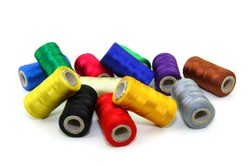
How price your crafts to make a profit
by 3bagsfull
Knowing how to price your crafts is very important. You must factor in time, materials and marketing costs to ensure a profit.
Pricing your crafts to sell them
Pricing crafts for sale can be daunting, especially to a new seller. Crafters must consider a variety of factors before setting a price:
1. Time – Time is one of the hardest variables to factor into pricing. In many cases a vendor may never feel his or her time was ever “paid for” when selling an item. A quick way to come up with a valid cost factor is to track the full amount of time it takes to create an item from beginning to end. This can include the purchasing of materials, the time it takes to generate the idea or pattern as well as the time to put the item together. Once the total amount of time has been determined, the seller can multiply that amount by an hourly rate. The rate is up to each individual, but a fair place to start is $10, $20 and $30 per hour. The results can be both surprising and helpful.
2. Shipping – Shipping is another tricky factor when pricing an item. Some shopkeepers do not like to charge for shipping to entice buyers. Others will charge only a partial amount of the actual cost of shipping while others have the buyer cover all shipping costs. The materials such as tape, boxes, and bubble wrap must also be factored into shipping costs or it can erode profits.
3. Materials – The cost of the materials to make items must be evaluated as well. Crafters may have to buy bulk materials and divide the cost among many products. Materials such as glue, solder, fixatives and findings cannot be left out of pricing even though their cost might seem minimal. Pennies can add up to dollars quickly.
4. Marketing Costs – Crafters may not invest heavily in advertising or public relations, however marketing costs include logo and graphic design, business cards, website hosting and design, packaging and brochures. Allocating a marketing cost to each product will ensure that funds are available to over these purchases.
5. Fees – Fees must be incorporated into pricing. Standard fees can be insertion and final price fees when selling on the web other than on your own website and fees to use a payment processor. Sellers may also generate fees when setting up a booth at a local market or regional craft fair.
The best tip to developing a pricing strategy is take the emotion out of the process. Determine the actual costs of doing business to determine the minimum amount each item must sell for in order to break even. Then, go back and review what others are charging for a similar item if at all possible. Adjust the pricing if necessary or develop a product that is different enough to others so direct comparison is difficult. If you sell 100 items for $1 or 1 item for $100, you arrive at the same amount, so review what is truly worth your time, effort and energy before moving forward.
You might also like
The Arduino Open Source Platform


 Learn about Fijit Friendson 10/29/2011
Learn about Fijit Friendson 10/29/2011
 How to photograph your crafts for better saleson 10/29/2011
How to photograph your crafts for better saleson 10/29/2011

Comments
If your packaging is top-notch, you can mark things up quite a bit. People are conditioned to think that if something looks expensive they ought to pay more.